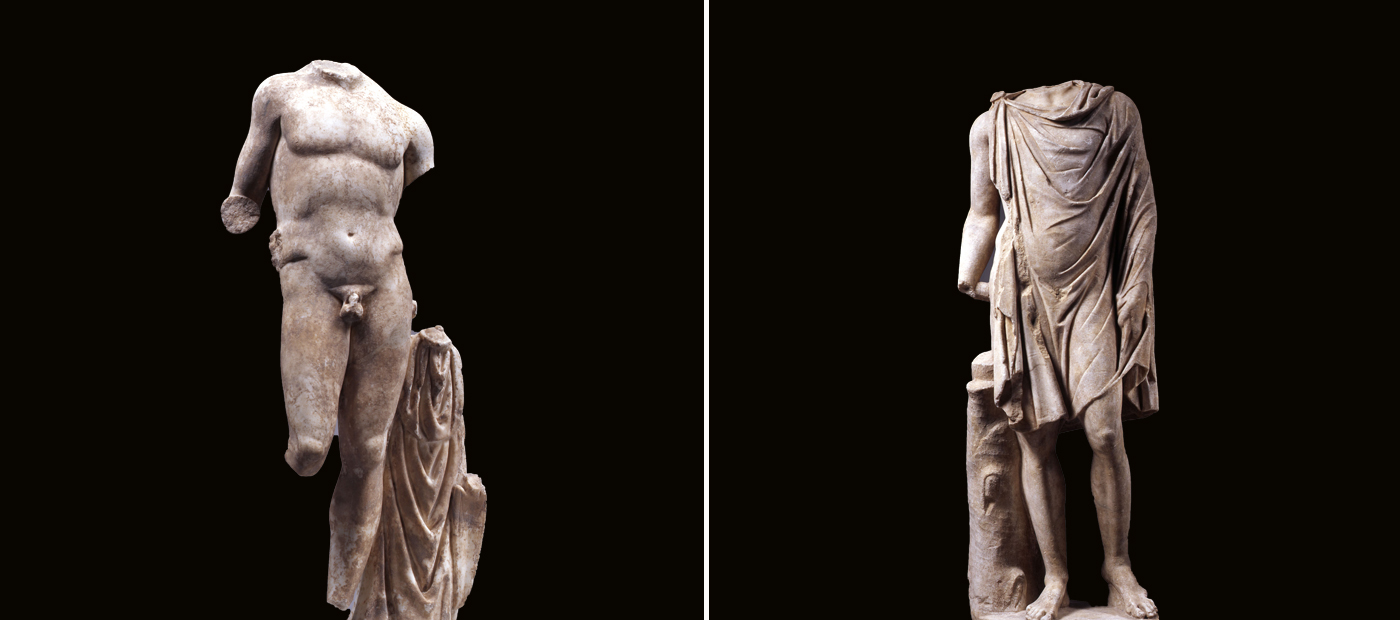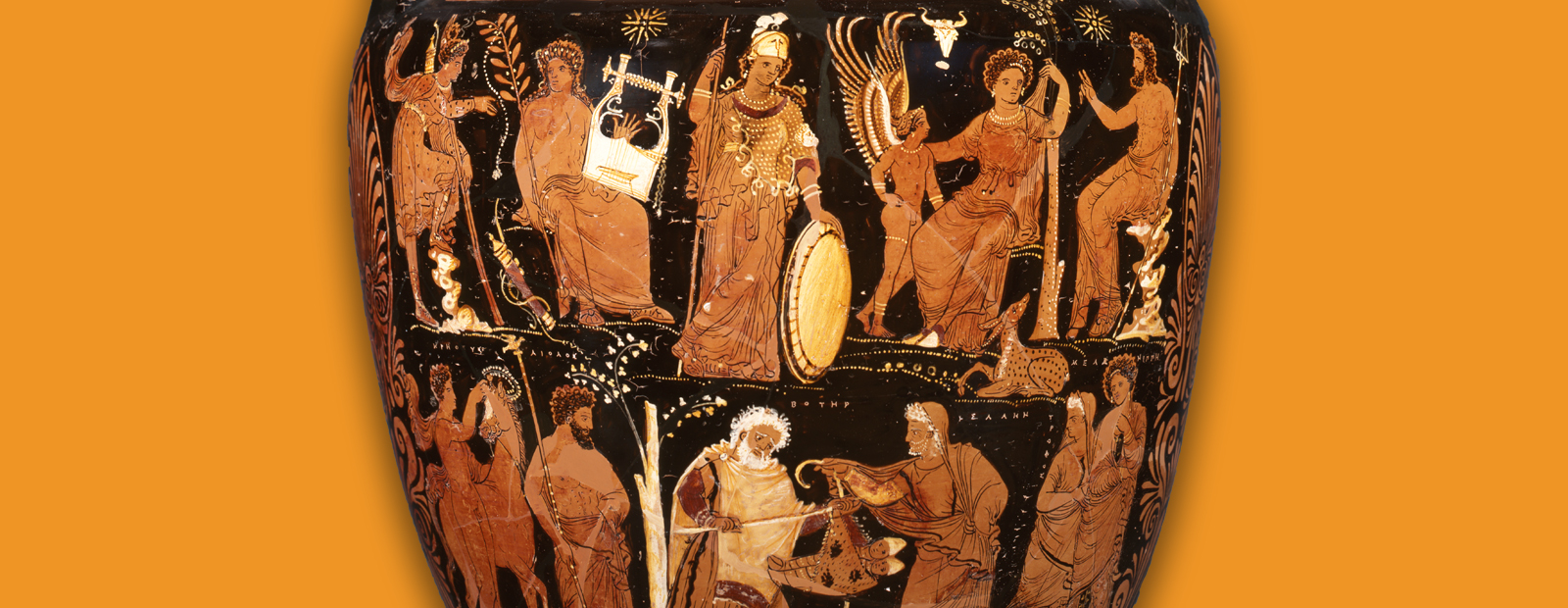As Emory prepares to celebrate its 175th Commencement on May 11 (albeit now in an online format to ensure the safety of our community) I’ve been thinking about the gods of wisdom, learning, and transition that are represented in the Carlos Museum’s collection of Greek and Roman art and wanted to share some of my favorites with you.
Athena is perhaps the deity we most associate with knowledge and learning in the classical world. Daughter of the Titan Metis (whose name means “cunning”) and the king of the gods, Zeus, Athena was goddess of wisdom, strategy, and good counsel as well as industry and craft.
As testament to her patronage of wisdom and learning, a monumental statue of the goddess (now in the Pergamon Museum in Berlin, Germany) was displayed in the great Library of Pergamon, which rivaled the Library of Alexandria in terms of the size and comprehensiveness of its collection. On a smaller, though no less impressive scale, another statue of Athena was found in the Villa dei Papiri in Herculaneum, from where more than 1,000 carbonized papyrus scrolls have also been recovered, representing the only extant library known to have survived from antiquity.
My favorite representation of Athena from the Carlos collection is on the red-figure volute-krater made in Apulia in the 320s BC (see above). The bottom register of figures depicts a scene from the myth of Melanippe, who was raped by the god Poseidon and gave birth to twin boys, which she hid from her father in a cowshed.
The babies were discovered by a herdsman, who brought them to Aeolus, mistakenly thinking they were the monstrous offspring of a cow. The vase depicts the moment when Aeolus’s father Hellen encourages the herdsman to destroy the babies while Melanippe looks on from the right, visibly upset.
The events are observed from above by five gods. Athena is recognizable at the center by her characteristic helmet, snake-trimmed cloak (aegis), shield and spear. I like to think that she is there to signal the tragic lack of knowledge displayed in the story by Hellen and the herdsman, as well as to prompt the viewer of the vase to demonstrate their own (superior) understanding of the myth and of what happens next.
Another god who is closely associated with knowledge and the arts is Apollo. When complete, the statue (below left) showed the god holding a kithara (lyre) in his right hand and a plectrum in his left, as though about to start playing.
Like the Athena from Herculaneum, it may have been displayed in a library or perhaps a theater, where it invoked the god as patron of music, poetry, and artistic inspiration.

This statue (above right) of a standing male youth probably depicts the traveling god, Mercury. Clues to his identity include the bare feet, which signal divine or heroic status, and the way in which the chlamys (cloak) is draped across his body and fastened with a brooch at the shoulder. This characterizes him specifically as an ephebe (male adolescent).
Mercury is perhaps best known as the messenger of the gods, but his purview was more nuanced and wide-ranging. He was a marker and transgressor of boundaries, a bringer of good luck, patron of merchants, protector of travelers and conveyor of souls to the Underworld.
Because of this association with journeys and the crossing of borders—both physical and metaphorical—he was also thought of as a god of transformation. This made him a popular patron deity of athletic training and mental discipline, with the result that statues like this one were in fact often used to decorate gymnasia in the Roman world.
It also made him an appropriate guardian of the transition from adolescence to adulthood—and a fitting guide for Emory’s graduating students as they celebrate their own rite of passage next week.
Congratulations, Emory Class of 2020!
Statue of Apollo. Roman, 1st-2nd century AD. Marble (Thasian, Paros 2). Carlos Collection of Ancient Art.
Statue of Mercury. Roman, 1st -2nd century AD. Marble (Aphrodisias, Paros 2). Carlos Collection of Ancient Art.





